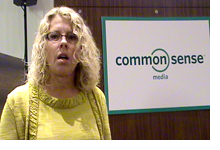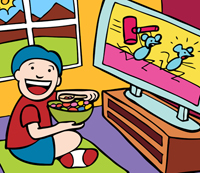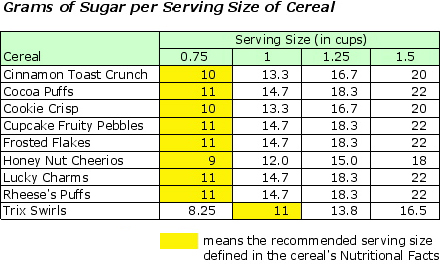Friday, November 1st, 2013
Summarizing “Zero to Eight Children’s Media Use in America 2013″
[The following is an article I wrote for the November 2013 issue of Children’s Technology Review. A PDF copy of the article from this magazine can be downloaded here.]
For those of us that work in children’s media, there’s nothing like finding a fresh, data filled report.
“Zero to Eight Children’s Media Use in America 2013” is Vicki Rideout’s latest in a series of reports commissioned by Common Sense Media. Having followed Vicky’s work for more than a decade, I asked her for an overview of her findings.
The first key finding is this: Television and video game use is down for children compared to just two years ago. (Yes, down, not up!) In addition, overall screen media use is down compared to what was recorded just two years ago.
Television viewing in the bedroom is also down by a sizable amount. As with the television and video game drop Vicky says “I’d like to look back on these data points from a future report to see if this is a bump or a trend.” This finding does beg some additional questions that cannot be answered through the report, like has there been a drop in the number of televisions owned in the home? Has the drop in television viewing in the bedroom shifted to video viewing on a tablet in the bedroom? Vicky says it is too early to tell if this is a trend.
According to Rideout “Little drops in each platform add up to a half hour of less screen time per day on traditional screens. Then when you add in the increase in mobile use it brings that number down to 20 minutes less screen time per day. While this drop in overall screen time is significant and noteworthy, I’d like to see what the research says in another two years.”
There’s a lot of material in this report about tablet and related mobile media use. For example, two years ago only 8% of parents owned a tablet. “Today it’s 40% and children’s tablet ownership is nearly similar to that of their parents from the 2011 report. Years ago handheld video game manufacturers noted that when an older sibling purchased a new handheld gaming device, a younger sibling would ultimately receive the older device. Could the same thing be happening here with parents purchasing a new tablet and giving the children their old one? This report can’t answer that question specifically, but one thing is clear: Tablet ownership by children will increase in the years to come.
Another key trend: there is a giant shift in media use, and “the tablet is a game changer.” Vicky told me that there is “some computer use among young children, starting as early as four years of age, but because the tablet has simplified the interface so much and made things so intuitive, we see really young children successfully using this platform. If a one or two year old child can turn the pages of a board book, that same child can touch and swipe a tablet. If that child can point to an image on a board book, then that child can launch an app. As a result, a large world of content is made available to these young children. The floor for how young children use this platform has gone way down compared to other technological innovations, even compared to the Wii, which was a huge leap forward in terms of intuitive use and interface deign.”
In addition Vicky notes: “People keep saying how children are so technologically smart. We have that notion backwards. It’s the technology that’s become smart, so smart that a kid, or even a baby can use it. This change is also opening up access to content that is not just about passive video watching.
“People keep asking me ‘Is this a good thing or a bad thing?’ Unless you believe that a screen per se is a bad thing for kids no matter what, I usually respond that this is just a thing, it’s just a tablet. The good or bad about a tablet depends on the quality of the content you share with a child through this new medium.”
Vicky’s comments just begin to scratch the surface of what’s included in this new report. However, Vicky also shared she is working on a new report, focused on the same zero to eight demographic, but this time she’s writing it for the Joan Ganz Cooney Center. This report will take a deep dive into educational media, eBooks, and joint media engagement (a fancy term for parents who share in the same media experience with their child). The scheduled date of release is January 23, 2014. We look forward to reading more!
Related links:
Zero to Eight: Children’s Media Use in America 2013
Common Sense Media
VIDEO – Parenting in the Age of Digital Technology – Vicky Rideout interview (2013)
360KID
Parenting in the Age of Digital Technology (2013)
Northwestern University
VIDEO – Vicky Rideout interview – Zero to Eight Children’s Media Use Research Overview (2011)
360KID
Zero to Eight: Children’s Media Use in America (2011)
Common Sense Media
Generation M2: Media in the Lives of 8- to 18-Year-Olds (2010)
Kaiser Family Foundation
Generation M: Media in the Lives of 8-18 Yr-olds (2005)
Kaiser Family Foundation
The Effects of Electronic Media on Children Ages Zero to Six: A History of Research (2005)
Kaiser Family Foundation
Zero to Six: Electronic Media in the Lives of Infants, Toddlers and Preschoolers (2003)
Kaiser Family Foundation
Kids & Media @ The New Millennium (1999)
Kaiser Family Foundation







